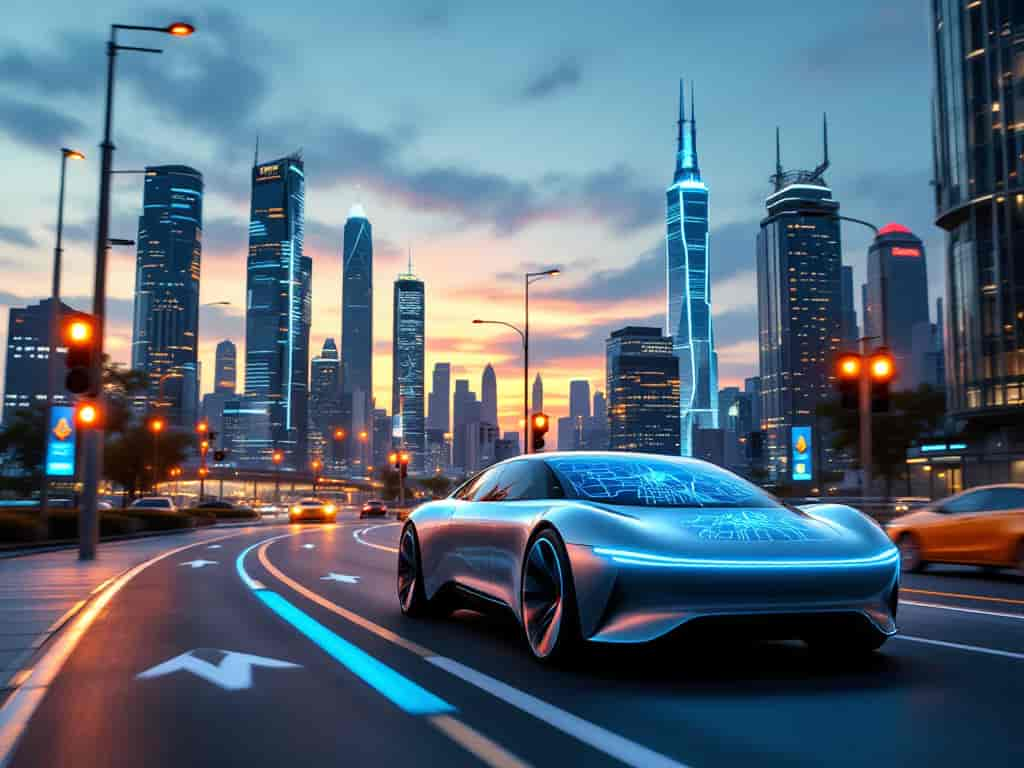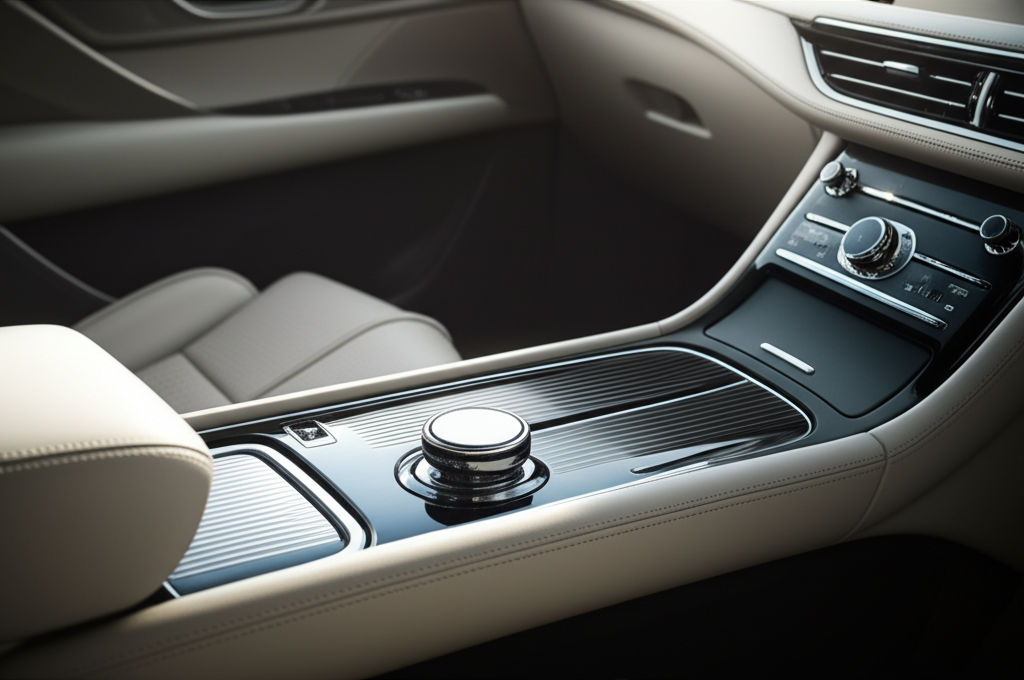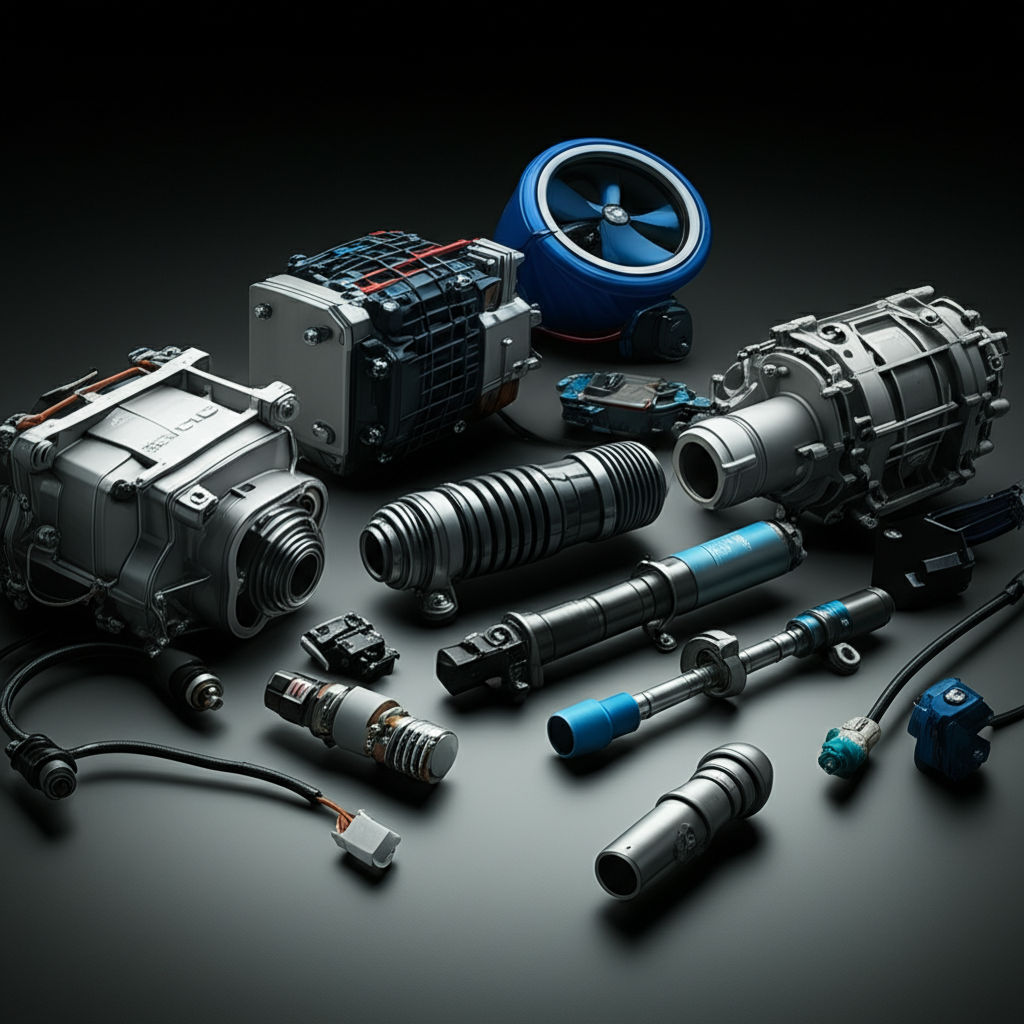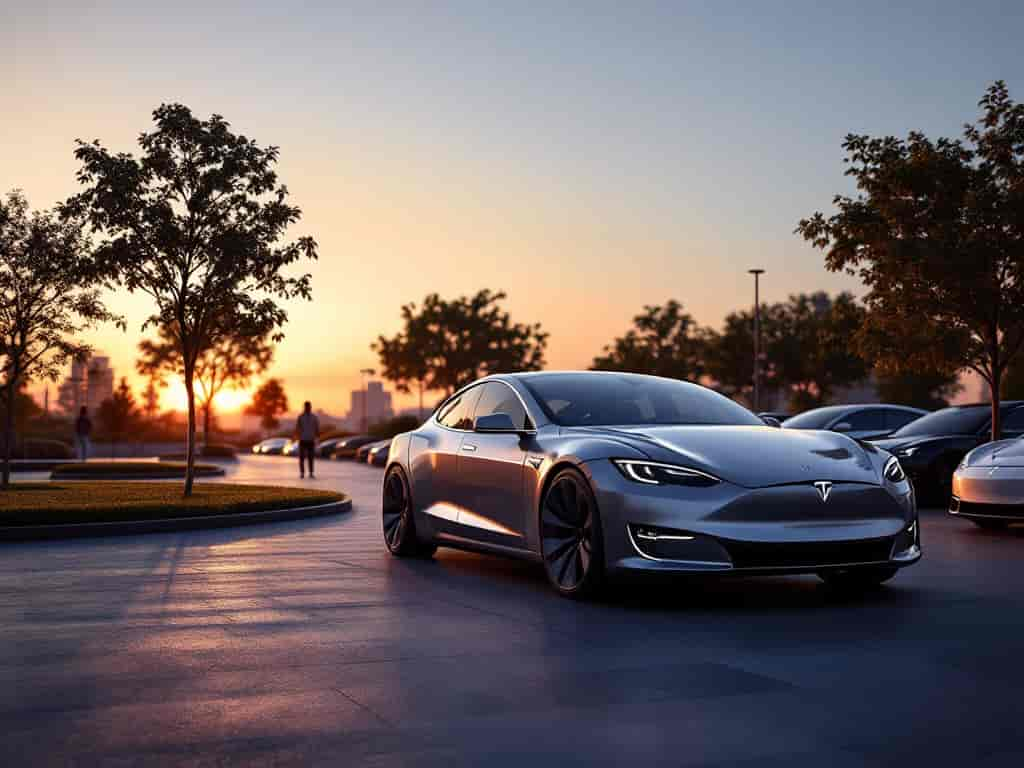Connected Cars & IoT: Driving into a Smarter Future
Ellie Moore

Photo: Connected Cars & IoT: Driving into a Smarter Future
Connected Cars & IoT: Driving into a Smarter Future
The automotive industry is experiencing a technological revolution, and at the heart of this transformation are connected cars and the Internet of Things (IoT). Together, they are reshaping the way we drive, commute, and interact with vehicles. In this article, we’ll dive deep into how connected cars and IoT are driving us toward a smarter, safer, and more efficient future.
What Are Connected Cars and IoT?
Connected cars are vehicles equipped with internet access, sensors, and advanced computing systems that allow them to communicate with each other, infrastructure, and external devices. Meanwhile, the Internet of Things (IoT) refers to a network of interconnected devices that collect, exchange, and act on data in real-time.
When integrated, these technologies create a seamless ecosystem where vehicles become intelligent entities capable of enhancing user experiences and driving efficiency.
The Key Features of Connected Cars
- Vehicle-to-Everything (V2X) Communication
Connected cars use V2X technology to interact with other vehicles, road infrastructure, and even pedestrians. This communication improves traffic management, reduces accidents, and paves the way for autonomous driving. - Advanced Driver-Assistance Systems (ADAS)
Features like adaptive cruise control, lane-keeping assistance, and automated emergency braking rely on IoT-enabled sensors, cameras, and data analytics to enhance road safety. - Infotainment Systems
IoT-enabled infotainment systems provide real-time navigation, personalized music streaming, and hands-free communication, elevating the overall driving experience. - Remote Diagnostics and Over-the-Air Updates
IoT empowers vehicles to send diagnostic data to manufacturers, enabling predictive maintenance. Over-the-air software updates ensure cars stay up-to-date with the latest features and security patches.
Benefits of Connected Cars and IoT
1. Enhanced Safety
According to the World Health Organization (WHO), road traffic accidents claim over 1.3 million lives annually. Connected cars, equipped with IoT-enabled sensors, can significantly reduce this number by providing real-time alerts, monitoring driver behavior, and even taking control during emergencies.
2. Improved Traffic Management
With IoT, vehicles can share data with smart traffic systems to optimize traffic flow. This reduces congestion, lowers emissions, and saves time for commuters.
3. Fuel Efficiency and Cost Savings
IoT-driven insights help drivers optimize routes and monitor fuel consumption. Additionally, predictive maintenance prevents costly repairs by addressing issues before they escalate.
4. Environmental Benefits
By reducing fuel wastage and promoting electric vehicle (EV) adoption, connected cars contribute to a greener planet. IoT systems can also help optimize charging schedules for EVs, reducing strain on power grids.
Challenges in Implementing Connected Cars and IoT
While the benefits are immense, several challenges must be addressed:
1. Data Security and Privacy Concerns
Connected cars generate vast amounts of data, raising concerns about cybersecurity and user privacy. Implementing robust encryption and compliance with data protection laws is essential.
2. Infrastructure Limitations
Smart roads and IoT-compatible traffic systems require significant investment. Developing countries may face difficulties in implementing such infrastructure.
3. Interoperability Issues
Standardizing protocols across manufacturers and devices is crucial for seamless communication within the IoT ecosystem.
4. High Development Costs
Building and maintaining IoT-enabled vehicles involves substantial R&D expenses, which could drive up vehicle costs for consumers.
Real-Life Examples of Connected Cars and IoT
- Tesla’s Autopilot
Tesla’s vehicles are a prime example of connected cars leveraging IoT. With features like autonomous driving, real-time software updates, and extensive sensor networks, Tesla showcases the potential of IoT in the automotive sector. - Ford’s SYNC Technology
Ford’s SYNC platform integrates IoT to offer voice-controlled navigation, entertainment, and emergency assistance, enhancing user convenience and safety. - Smart Traffic Management in Singapore
Singapore has implemented an IoT-powered traffic system that uses real-time data to manage traffic lights, reduce congestion, and improve public transportation efficiency.
Practical Tips for Embracing Connected Cars and IoT
If you’re considering investing in a connected car or exploring IoT technology, here are some actionable steps:
- Evaluate Your Needs:
Determine which features (e.g., ADAS, infotainment) align with your driving habits and priorities. - Prioritize Security:
Opt for vehicles with strong cybersecurity measures and regular software updates. - Stay Updated on Regulations:
Keep an eye on government policies related to connected vehicles and IoT to ensure compliance and access to incentives. - Explore Electric Vehicles:
Many EVs are leading the way in IoT integration, offering advanced features and environmental benefits.
The Future of Connected Cars and IoT
The future promises even more transformative advancements. With the rise of 5G technology, the latency in V2X communication will decrease, enabling real-time decision-making for autonomous vehicles. Moreover, AI-powered IoT systems will enhance predictive analytics, making transportation smarter and more efficient.
Governments and private players are also investing heavily in smart city projects, where connected cars and IoT will play a central role in creating sustainable urban environments.
FAQs About Connected Cars and IoT
1. What is the role of 5G in connected cars?
5G networks provide the low-latency, high-speed communication required for real-time data exchange in connected cars, especially for autonomous driving.
2. Are connected cars safe from hacking?
While connected cars are vulnerable to hacking, manufacturers are implementing advanced encryption and cybersecurity measures to protect user data and vehicle systems.
3. How does IoT improve fuel efficiency?
IoT systems analyze driving patterns and provide recommendations to optimize fuel consumption, such as suggesting efficient routes and monitoring vehicle performance.
Conclusion
Connected cars and IoT are not just futuristic concepts they are shaping the present and driving us toward a smarter, safer, and more connected future. By addressing the challenges and embracing innovation, we can unlock the full potential of these technologies.
What are your thoughts on connected cars and IoT? Share your opinions in the comments below! Don’t forget to share this article with fellow tech enthusiasts.
Finance & Investment
View All
October 19, 2025
June Car Finance Deals Worth GrabbingUnlock top rankings with expert SEO content. Create valuable, authoritative, and trustworthy material that satisfies user intent and Google's E-E-A-T.
Ellie Moore

June 9, 2025
Entry Level Finance Jobs You Can Start TodayDominate search rankings with expert SEO content. Discover how to craft high-quality, E-E-A-T-focused material that satisfies Google and builds user trust.
Ellie Moore

May 26, 2025
Business Finance for Poor CreditElevate your SEO with expert content! Learn to create valuable, authoritative, E-E-A-T-driven content for higher rankings, engaged readers, and strong brand cre...
Ellie Moore

February 24, 2025
Home Financing Options ExplainedUnlock top SERP rankings with expert SEO content. Learn to create valuable, authoritative (E-E-A-T) content that engages and converts your audience.
Ellie Moore

March 22, 2025
What the National Finance Center Really DoesGo beyond basic SEO. Discover how to craft expert content using Google's E-E-A-T framework to build trust, authority, and rank higher in search results.
Ellie Moore

January 11, 2025
Can You Use Google FinancingUnlock top rankings with expert SEO content! Learn to create authoritative, high-value content that builds trust and drives organic traffic.
Ellie Moore
Insurance
View AllMaster Essential Direct Auto Insurance to cut costs, optimize coverage, and boost financial security. A must-read for policyholders, risk managers & agents.
Ellie Moore
Protect your dog's health & your wallet from high vet bills. Discover essential dog insurance coverage to ensure peace of mind for you and your furry friend.
Ellie Moore
Houston renters, protect your assets! Our guide covers essential renters insurance for Space City's unique risks like storms & crime. Find your best coverage no...
Ellie Moore
Renting comes with risks. Safeguard your belongings, finances, and peace of mind with Allstate Renters Insurance. Explore coverage, costs, and essential benefit...
Ellie Moore
Secure your health & finances! Discover how to confidently select the best, most affordable top-rated health insurance plans for comprehensive coverage.
Ellie Moore
Demystify Allstate insurance quotes. Learn how to get comprehensive car & home coverage, protect your assets, and secure peace of mind with savings.
Ellie Moore
Education
View AllUnschooling is redefining education. Learn how this self-directed approach works and why more families are embracing it as an alternative to traditional schooling.
Read MoreUnderstand dyslexia and discover effective ways to support dyslexic students in the classroom. Learn proven strategies to improve learning outcomes.
Read MoreDifferentiated instruction helps teachers reach diverse learners. Find out how tailored teaching improves outcomes for every student.
Read MoreIs a college degree still worth it? Dive into a detailed analysis of the ROI on higher education, including costs, benefits, and future prospects.
Read MoreDiscover why liberal arts education remains valuable in today’s tech-driven world. Explore how it fosters critical thinking and adaptability.
Read MoreCompare Montessori and traditional education methods. Discover which approach is more effective for fostering creativity and independence in students.
Read MorePopular Post 🔥
View All
1
2
3
4
5
6
7
8
9
10
Health





Automotive
View All
February 4, 2025
Automotive Design Trends Shaping the Future
Discover emerging trends in automotive design. From futuristic aesthetics to smart features, explore what’s revolutionizing the car industry.

September 13, 2025
What Lincoln Automotive Financial Can Offer
Embark on luxury vehicle ownership. Experience refined elegance & innovative spirit for an exciting journey ahead.

July 14, 2025
An Overview Of Automotive Components Holdings
Discover the automotive components industry! Learn about its structure, key players, trends, and challenges in this comprehensive guide.

February 4, 2025
Tire Care Guide: Boost Tire Life & Performance
Maximize tire life with essential tire care tips! Learn how proper maintenance improves performance and ensures safety on every drive.

February 7, 2025
Car Subscriptions: The Future of Vehicle Ownership
Explore the rise of car subscription services. Find out how they work, pros & cons, and why they’re becoming the latest trend in mobility.

February 10, 2025
Electric Motorcycles: The Future of Two-Wheel Rides
Are electric motorcycles the next big thing? Explore the latest models, benefits, and how they compare to traditional bikes. Ready to switch gears?


















